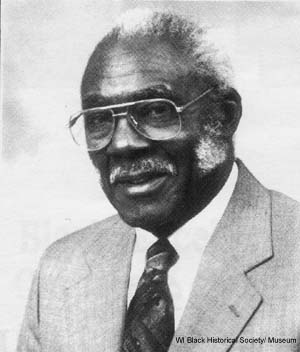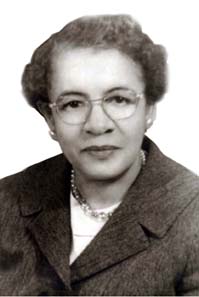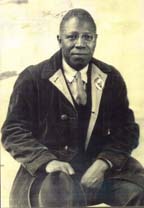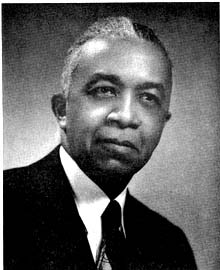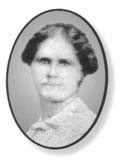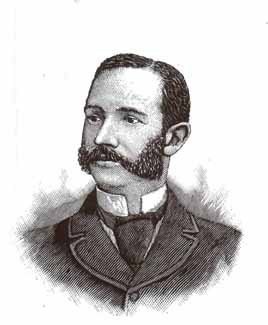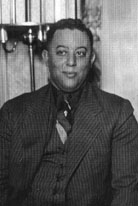Learning Center
Get lesson plans and worksheets that specialize in Wisconsin’s African American History.
Elementary
- Wisconsin’s Role in the Underground Railroad
- Abolitionist Broadside from Milwaukee, 1854
- A Wisconsin Soldier Refuses to Give Slaves Back to Their Owners in 1862
- 1865: Should Black Citizens Be Allowed to Vote?
- Wisconsin ‘s Opportunity for African Americans: 1945-1959
- 1966-1984: Desegregating Milwaukee Schools &
- Negro Business Directory of the State of Wisconsin
- Oral History: Rubie Bond, the African- American Experience in Wisconsin
Secondary
Bios of Important People and Frequently Requested Information.
Bios of some important figures in Wisconsin’s history, these bios will change quarterly. For complete bios please contact our office at 414-372-7677
Felmers Chaney – July 12, 1918- present
Felmers Chaney, from Spooner, Wisconsin, was a Milwaukee police officer for 36 years and was Milwaukee’s first African American police sergeant. He patrolled Walnut Street and became legendary for keeping order. Always dedicated to Milwaukee’s inner city, he served as president of the Central City Development Corporation, CEO of the North Milwaukee State Bank, and president of Milwaukee’s NAACP Executive Committee, where he fought tirelessly for people’s rights. A minimal security correctional institution was named in his honor.
Bernice C. Lindsay
Bernice Lindsay, from Winchester, Indiana, moved to Milwaukee in 1928. She truly loved the people of her community, especially the children. She was Executive Secretary of the North Side YWCA from 1928 to 1949. In 1933, she helped organize the Mary Church Terrell Club. She was an original member of the Milwaukee Commission on Human Rights, formed in 1944. In 1957 she was appointed to the Governor’s Council on Human Rights. She was a charter member of the Delta Sigma Theta Sorority in Milwaukee. In 1963 she founded the Creative Center, a place of art, culture and education. In 1967 the City of Milwaukee named a street in her honor.
Ardie Halyard
Ardie and Wilbur Halyard moved to Wisconsin from Atlanta, Georgia, in 1920. They first settled in Beloit but later moved to Milwaukee. In 1924, they started Columbia Savings & Loan to help African Americans purchase homes. Mrs. Halyard challenged discrimination and became an active leader in civic organizations. She worked tirelessly for the NAACP. She organized the Kenosha chapter, revived the Racine chapter, and formed the Milwaukee NAACP Youth Council, which participated in the city’s open house marches in the 1960’s.
Click here to read full bio
J. Howard Offutt
J. Howard Offutt, affectionately known as “Papa”, was a man of integrity and respect. He taught others to sing in community centers, churches and concert halls. Born in Glencoe, Illinois, he moved to Milwaukee in 1929 and began working as choir director for St. Mark’s AME Church until retiring in 1971. He was also involved with the Milwaukee Urban League’s music department and the Wisconsin Methodist Church Youth programs. In the 1940’s “Papa” Offutt led as many as seven choirs in churches, schools and community organizations.
William Kelly
William Kelly led the Milwaukee Urban League for 31 years, and through his service helped to make Milwaukee a better place in which to live. He was hired in 1928 at a time when many Milwaukee African Americans were jobless and poor. Kelly was devoted to preventing discrimination against African American people and finding jobs for them. His persuasive personality convinced companies to provide jobs to African American men and women. He also convinced churches to assist in educating African Americans to read and write.
Caroline Quarles
In summer of 1842, Caroline Quarles, a 16-year-old slave, started her journey to freedom by escaping and boarding a steamboat in St. Louis. She traveled up the Mississippi River, where a reward of $300 was placed on her head, and then by stagecoach to Milwaukee. With the help of abolitionists she hid in barrels and crossed rivers until she reached safety at Deacon Samuel Brown’s farm at 16′ Street and Fond du Lac Avenue. After hiding out for several weeks and moving from “station” to “station” she was able to flee to Canada through the back roads of Wisconsin and Michigan, a journey that lasted five weeks.
Joshua Glover
In 1852, Joshua Glover escaped from a Missouri plantation. He traveled the Underground Railroad to Racine, Wisconsin. Two years later his “owner,” accompanied by a U. S. Deputy Marshal and five men, forcibly entered Glover’s cabin and took him to jail in Milwaukee. News of Glover’s arrest angered the abolitionist community of Southeastern Wisconsin who decided to defy the Fugitive Slave Laws. Rallied by abolitionist editor Sherman Booth, and armed with a judge’s orders to release Glover, hundreds of abolitionists stormed the jail, freed him, and assisted his escape to Canada.
Joe Harris – Feb. 1899-Dec 1960
Thomas Clinton (Joe) Harris, known as the “policy king” in Milwaukee’s African American community, was the owner of the 711 Club, a nightclub at 711 West Walnut Street. Highly respected, he often held “court” in his club to resolve disputes between neighborhood people. He earned millions of dollars from his various businesses and policy games, but he was a generous contributor to various institutions and often received praise for his civic work. A eulogy to Mr. Harris asserted that he had donated money to nearly every African American church in Milwaukee.

